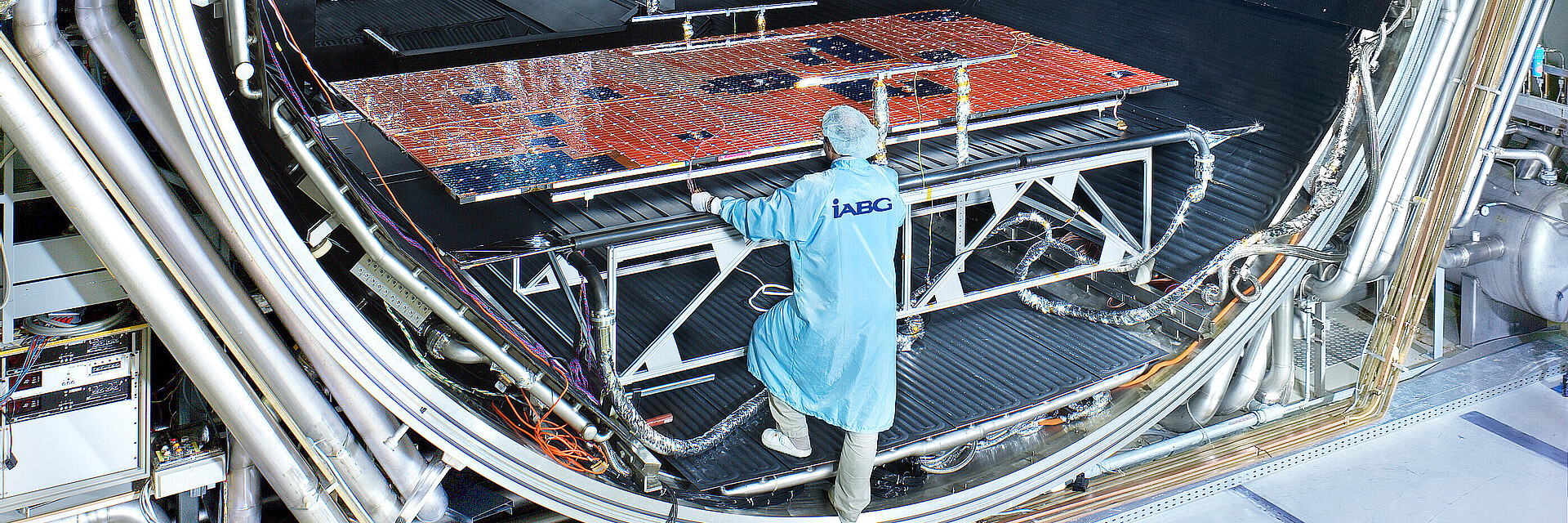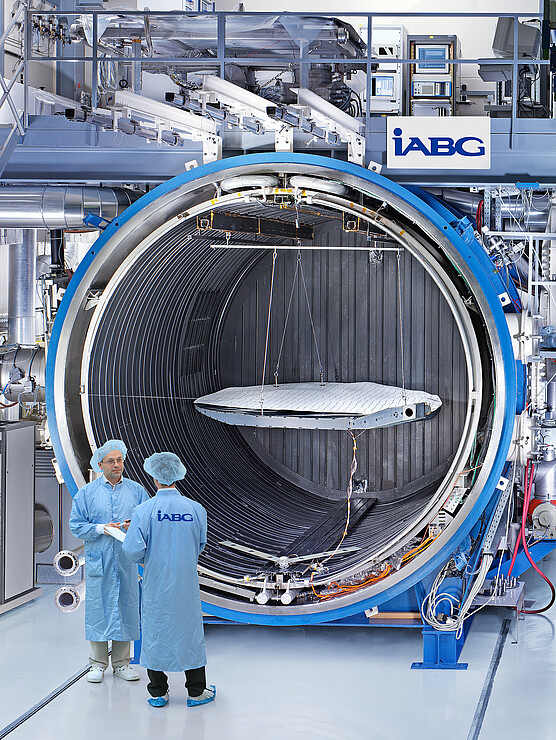Thermal Vacuum Test (TV)
Thermal functional testing of both complete systems and individual control system components in high vacuum under varying temperatures.
Thermal Equilibrium Test (TB)
Testing at thermal equilibrium in a vacuum at different temperature levels to validate thermal model calculations.
Thermal Vacuum Cycle Test (TC)
Test in which the test specimen is subjected to a certain number of temperature cycles with specified minimum and maximum temperatures as well as defined holding times and temperature ramps.
Bake-out Test
Test in which the test specimen is exposed to a high temperature in a vacuum for a defined period of time. This removes outgassing products, such as silicones, which are present in the structure or adhesives due to the manufacturing process.
Low Temperature Test at Cryogenic Temperatures
The thermal walls of the test chambers are typically cooled using liquid or gaseous nitrogen, achieving minimum temperatures of approximately 90 Kelvin, sufficient for most test campaigns. However, for specific requirements, such as cooled optical instruments, significantly lower temperatures are necessary. IABG operates a specialized test chamber equipped with a helium cooling system, allowing temperatures as low as 10 Kelvin (near absolute zero) to be reached.


